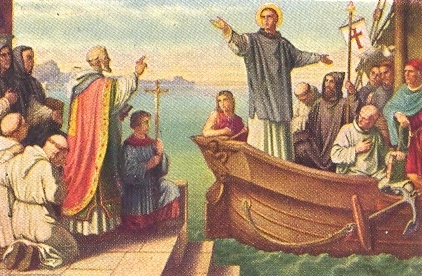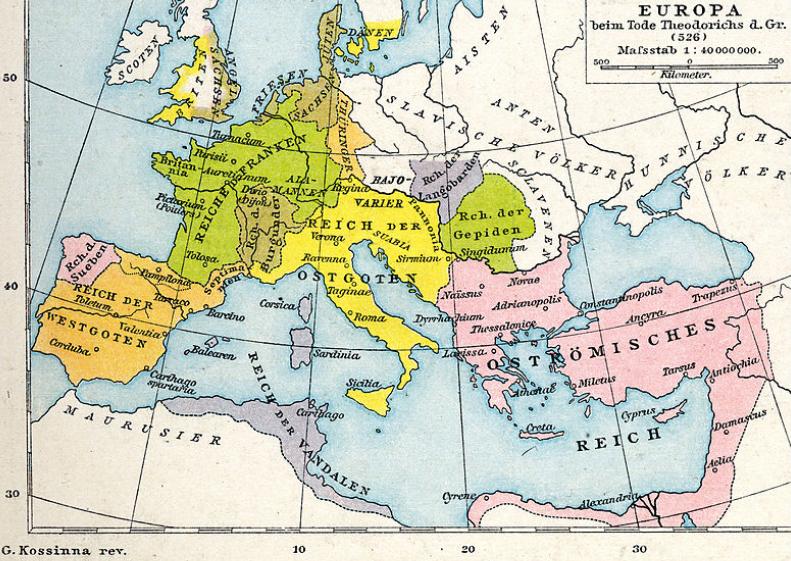Gundhareus (Gundar, Günther), a son of the Frankish king Lothair IV, is regarded as the ancestor of the ruling counts of Schwarzburg, who became Princes of the Holy Roman Empire during the eighteenth century.
Gundhareus was one of the five Thuringian counts, who supported Saint Boniface, the reformer of the Frankish Church during the 8th century.

Pepin continued the work of his father in supporting Saint Boniface in reforming the Frankish church. The Franks took pride in having “fought against and thrown from their shoulders the heavy yoke of the Romans” and “from the knowledge gained in baptism, clothed in gold and precious stones the bodies of the holy martyrs whom the Romans had killed by fire, by the sword and by wild animals”.
According to ancient custom, Pepin was elected King of the Franks by an assembly of Frankish nobles. Anointed a first time in 751 in Soissons by Boniface, archbishop of Mainz, Pope Stephen II travelled to Paris to anoint him and his sons at the Basilica of St Denis in 754.
In antiquity Mainz was a Roman fort city which commanded the west bank of the Rhine at its confluence with the Main and formed part of the northernmost frontier of the Roman Empire. Mainz is famous as the home of the invention of the movable type printing press. The first books printed using movable type were manufactured in Mainz by Gutenberg.
Germania was the Latin name for the region beyond the Rhine and the Danube rivers. The Holy Roman Empire was long described as German and consisted of many kingdoms, principalities, free cities, bishoprics, and duchies over much of western Europe north of the Alps.
In Rome, Adrian had balanced the Byzantine emperor against the Frankish king. After deposing her son, the empress Irene became the first woman to rule the empire from Constantinople, in her own right. The hostile nobility in Rome exploited this opportunity to attack Leo, who fled across the Alps to his protector, Charlemagne, at Paderborn.
Charlemagne was persuaded by Alcuin that “the whole salvation of the church of Christ” rested in Charlemagne’s hands. In the autumn of 800, Charlemagne set out for Rome “to restore the state of the church which was greatly disturbed.” On December 25, as Charlemagne rose from prayer, Leo suddenly placed a crown on his head and the assembled Romans acclaimed him as “Augustus and emperor.”
According to the chronicler Theophanes, Charlemagne hoping “to reunite east and west” offered marriage to the empress Irene.
In his official charters, Charlemagne preferred the style “Charles, most serene Augustus crowned by God, the great, peaceful emperor ruling the Roman empire”, Karolus serenissimus Augustus a Deo coronatus magnus pacificus imperator Romanum gubernans imperium to the more direct “Emperor of the Romans”, Imperator Romanorum
For centuries, successive emperors in Constantinople maintained the claim to be the only true successor to the Roman Caesars.

